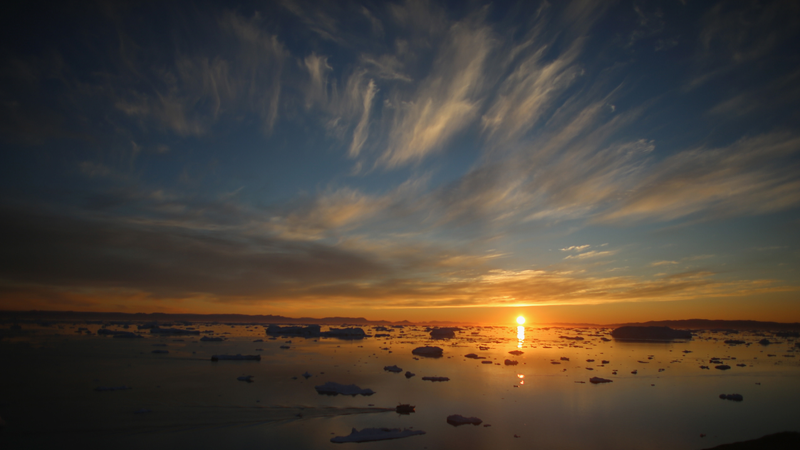
The Arctic We Know Is Disappearing
by Dharna NoorThere have been some pretty freaky things happening in the Arctic this year, with historic levels of ice melt, absurdly high temperatures, and wildfires in an area that’s meant to be the definition of cold. New research by scientists at the National Center for Atmospheric Research (NCAR) shows that we shouldn’t just treat these occurrences as blips, but as signals that the Arctic is transitioning into a completely different climate.
Year-to-year fluctuations in the climate are normal for the Arctic (or anywhere really). But the new study, published in Nature Climate Change on Monday, finds that the Arctic’s level of warming have now pushed it outside the limits of any past fluctuations. What comes next will be a hotter, rainier place where long periods free of ice.
The authors’ research is based on both observations of Arctic climate conditions and hundreds of computer simulations. From this past data, they found that the Arctic’s average extent of September sea ice—the month when it reaches its annual minimum—is currently 31% lower than the average seen during the first decade of satellite-based record keeping between 1979 and 1988.
The authors wanted to see if this sharp decline indicated that the Arctic’s has undergone a regime shift, or a fundamental change of climate. So, they turned to hundreds of computer-based climate simulations from five of the world’s leading climate models. Armed with these simulations, they were able to define the boundaries of what they call the “old Arctic,” or the boundaries of natural year-to-year variability. By comparing the models’ output for past climate scenarios with actual observations of the Arctic, they were able to confirm that the models were accurately capturing the past and therefore could reliably simulate our climate future.
The scientists found that sea ice has melted so significantly in recent decades that even an unusually cold year will no longer bring the extent of summer sea ice to the Arctic that it saw as recently as the mid-20th century.
G/O Media may get a commission

Baby Yoda Echo Dot 3rd Gen Stand
Buy for $25 from Amazon
“The rate of change is remarkable,” said NCAR scientist Laura Landrum, the lead author of the study, in a statement. “It’s a period of such rapid change that observations of past weather patterns no longer show what you can expect next year. The Arctic is already entering a completely different climate than just a few decades ago.”
Landrum and her team also made predictions of what we’ll see in the Arctic in future decades if we don’t make big changes, based on the climate scenario known as RCP8.5 or “business as usual.” Under those conditions, which assume that world leaders make no major changes in climate policy to lower emissions, the authors found that the Arctic’s autumn and winter air temperatures will warm up enough to enter a statistically distinct climate by 2050.
With that shift will come further changes in sea ice extent. By 2100, the models showed the Arctic could become nearly ice-free for up to 10 months out of the year.
The authors expect the Arctic will also see big changes in precipitation, too. The region is known for its snowy winter season, but if emissions persist at their current level, the Arctic will be seeing a lot more rain. By the end of the century, some Arctic regions are projected to see conditions that could bring rain instead of snow in any month of the year, even during the traditionally frigid winter.
The shifts in climate have already had enormous consequences. Indigenous communities and wildlife alike depend on sea-ice, for instance. As it’s disappeared, seals and birds have become malnourished, and native people have faced hardship in hunting. Melting permafrost under warmer Arctic temperatures has also already made coasts more vulnerable to dangerous erosion. Over time, these impacts will become all the more severe. Those of us far from the Arctic should be concerned, too. Melting land ice can push up sea levels, which can overwhelm coastal communities around the world.
But that does not have to be our fate. The researchers’ predictions are based on a scenario in which policymakers do nothing to curb climate change. It’s the massive increase in greenhouse gases that got us into this mess—lowering emissions is our only option to get out of it.